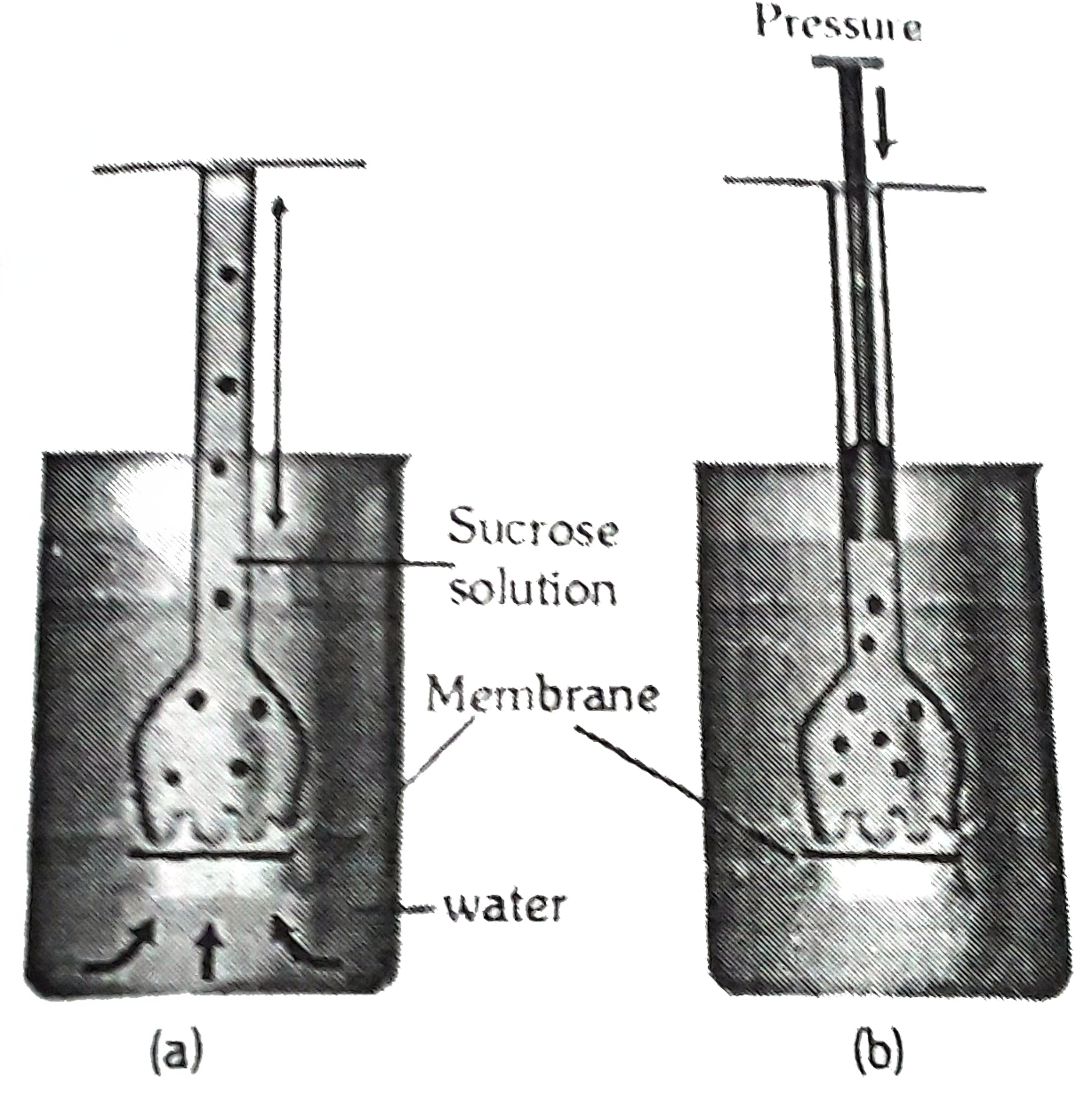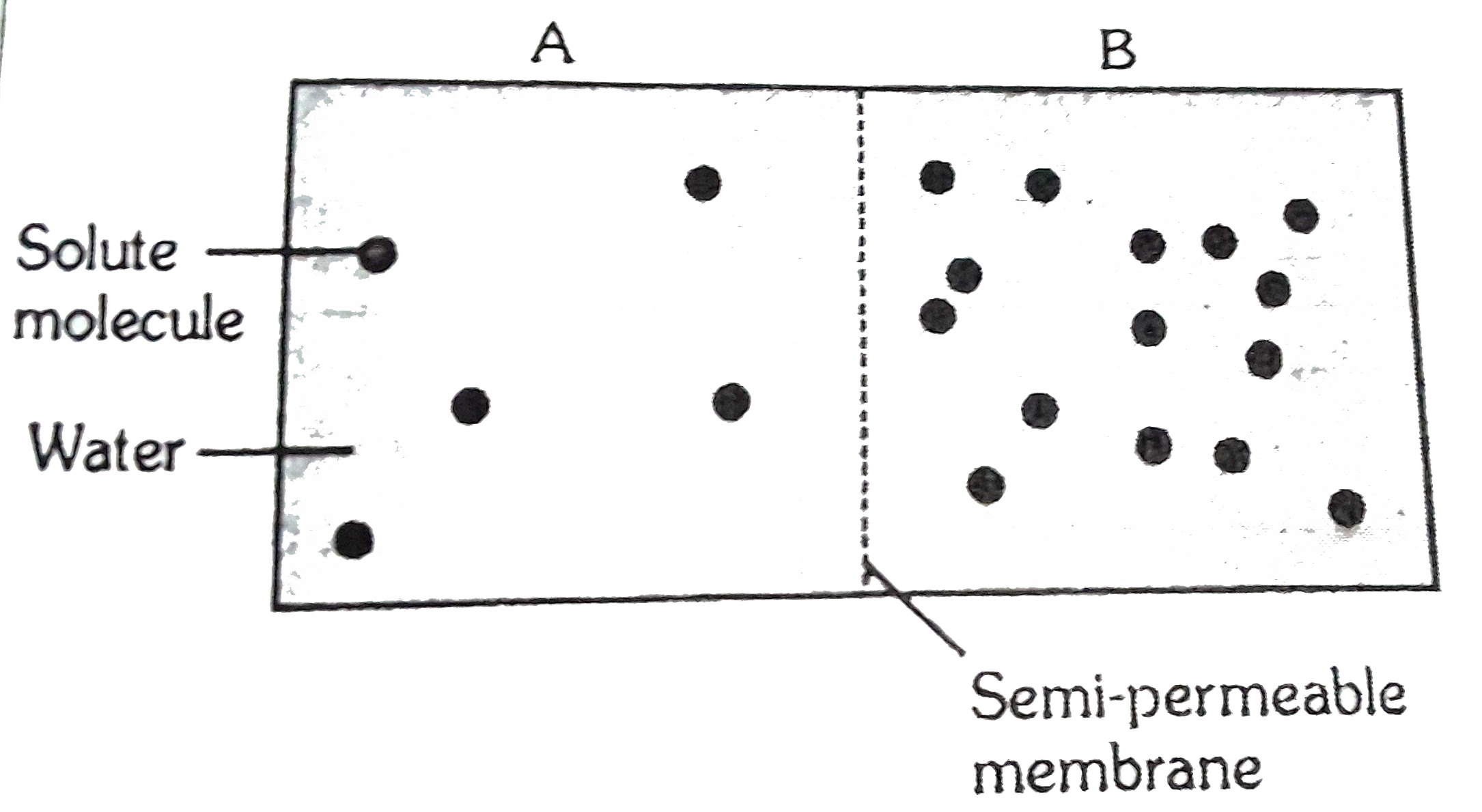
Study the given figure carefully and select the true and false statement(s) in this demonstration.
(a) Numerically this external pressure in figure (b) is equivalent to the osmotic potential of a solution, but the sign is opposite.
(b) Osmotic pressure is due to the solute concentration.
The correct Answer is:(a) True
(b) True
Step by step video & image solution for Study the given figure carefully and select the true and false statement(s) in this demonstration. (a) Numerically this external pressure in figure (b) is equivalent to the osmotic potential of a solution, but the sign is opposite. (b) Osmotic pressure is due to the solute concentration. by Biology experts to help you in doubts & scoring excellent marks in Class 12 exams.
Updated on:21/07/2023Topper's Solved these Questions
Similar Questions
Study the given figure carefully and select the true and false:- statement(s) regarding it.

(a) Solution of chamber B has a lower water potential.
(b) Solutio of chamber A has a lower solute potential
(c). Osmosis occurs from chamber A to B.
(d) Solution f cham ber B has higher solute potential.
(e) At equlibrium both chambers have equal water potential.
(f) If one chamber has a Ψ of -2000 kPa and the other -1000kPa then chamber with Ψ of -1000 kPa has the highger Ψ
View SolutionRead the following statements and choose the correct option. (A) Osmotic pressure is equivalent to the osmotic potential but the sign is opposite. (B) During plasmolysis water is first lost from the vacuole then from the cytoplasm. (C) The process of plasmolysis is usually reversible
View Solution
Knowledge Check
At a given temperature, osmotic pressure of a concentrated solution of a substance __
Ais higher than that of a dilute solutionBis lower than that of a dilute solutionCis same as that of a dilute solutionDcannot be compared with that of a dilute solution.Study the following figures and select the correct statements regarding these.

(i)A shows mode of asexual reproduction in sponges through internal buds.
(ii)B shows sexual reprodction through zoospores in Chlamydomonas.
(iii) C shows asexual reproduction through fragmentation in Penicullium.
(iv) D shows external budding in Sycon.A(i) and (ii)BSmaller organisms always have shorter life span and vice versa.C(ii), (iii), and (iv)D(i) and (iv)
The osmotic pressure is equivalent to …………………………… potential according to thermodynamics concept but opposite in sign of its value.
View SolutionAt a given temperature, osmotic pressure of a concentrated solution of a substance……
View Solutionconsider 0.1 M solutions of two solutes X and Y. The behaves as a univalent electrolyte while the solute Y dimerises in solution. Which of the following statement are correct regarding these solutions?
(1) The boiling point of the solution of X will be higher than that of Y
(2) The osmotic pressure of the solution of Y will be lower than that of X
(3) The freezing point of the solition of X will be lower than that of Y
(4) The relative lowering of vapour pressure of both the solutions will be the same
(a)1, 2 and 3
(b)2, 3 and 4
(c)1, 2 and 4
(d)1, 3 and 4
View SolutionSolute A is a ternary electrolyte and solute B is non-elctrolyte . If0.1M solution of soluteB produces an osmotic pressure of 2P,then 0.05Msolution of Aat the same temperature will produce on osmotic pressure equal to
View Solutionvan't Hoff proved that osmotic pressure (π) is a colligative property. For an ideal solution, osmotic pressure(π) is helpful to determine that molecular mass of solute using MB=WBRTπ.V Relation can exxpressed by the curve (C = concentration) :
View SolutionStatement-I: 1M solution of Glauber's salt is isotonic with 1M solution of KNO3.
Because
Statement-II: Solutions having same molar concentration of solute may or may not have same osmotic pressure.
View Solution
